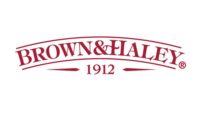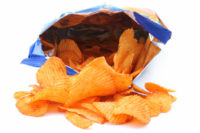Americans are chewing a lot less gum these days, according to a new report from Rabobank – and it is mints that are taking the "share of mouth."

|
A new report, "A Nation of Suckers," points out that the $4-billion U.S. gum market is down 10 percent in sales and a whopping 20 percent in volume in the last five years alone. Sales are falling across the board, from kid-friendly bubble gum to mainstream sugar-free chewing gum. Rabobank says the widespread exodus suggests it is an issue with the category itself, and not a particular company or product.
The mint category, however, is being invigorated by rapid growth in recent years, especially stronger tasting mints that are marketed as breath fresheners. U.S. mint sales burst nearly 20 percent over the past five years, reaching $1.2 billion in 2013.
"The gum industry has become unstuck and will need to sink its teeth into some solid marketing ideas in order to re-inflate sales," says Rabobank Senior Analyst Nicholas Fereday. "Savvy mint companies have packed fresh breath, oral hygiene and low calories into their marketing mix, and trumped gum on convenience and value. If current trends continue, we may become a nation of suckers."
Factors deflating U.S. gum sales
Three of the factors popping gum's bubble, Fereday says, are loss of appetite among youth, consumer distaste for artificial ingredients contained in most gum, and overblown brand and flavor extensions.
1. Losing the youth vote. Young adults and especially teenagers are traditionally the hard-core chewers of gum, but this key demographic is losing interest. Back in the day, Bob Dylan sang, "Don't wanna be a bum, you better chew gum," but now the opposite holds true. Witness the Beldent chewing gum experiment now airing on YouTube, where 70 percent of people gave the thumbs up to a non-gum chewer over his/her gum chewing twin.
2. "Ew" to artificial. In an age where natural and clean labels are the recipe for success, gum ingredients can seem uncomfortably artificial. The recent awareness about the use of trans fats in gum manufacturing further increased the '"ick'"factor.
3. Enough already! Over-innovation and too many new launches have left consumers somewhat dazed and confused when it comes to gum choices.
Make way for mints
On top of these factors, Fereday says, the major driver behind gum's decline is the ascendancy of mints. The U.S. market has seen 4 percent CAGR since 2008, with standard mints growing 15 percent, and power mints growing 27 percent, up 6.4 percent in 2013 alone.
While not fully offsetting the decline in gum sales, most mint products contain many more servings (five to seven times) than gum products. Mints also have the additional advantages of leaving no product waste, thus eliminating the "residue" issue, and also being much more discreet to suck than chomping on gum.
Care for Some Gum?
The reports unwraps four suggestions for gum manufacturers to chew on:
1. Go natural. Use natural sweeteners such as stevia, experiment with natural gums such as chicle, and eliminate the more artificial ingredients that set alarm bells ringing.
2. Sell the health. Tout the oral health and hygiene benefits of a good chew — saliva production, tooth decay prevention, stress release, and focus. The hygiene message may play better with mature audiences.
3. Take a walk on the wild side. Promote the fun aspects of chewing gum — especially bubble gum — to the youth market.
4. Apres-snack. Today's culture of snacking and all-day grazing offers many opportunities for post-snack breath freshening. Gum could fit the bill for an after-snack, low-calorie breath freshener.
For more information please contact the report's author:Nicholas Fereday: nicholas.fereday@rabobank.com +1 212 916 3793.
Rabobank Group is a global financial services leader providing wholesale and retail banking, leasing, real estate services, and renewable energy project financing. Founded over a century ago, it’s one of the largest banks in the world, with nearly $1 trillion in assets and operations in more than 40 countries. In North America, Rabobank is a premier bank to the food, beverage and agribusiness industry.





